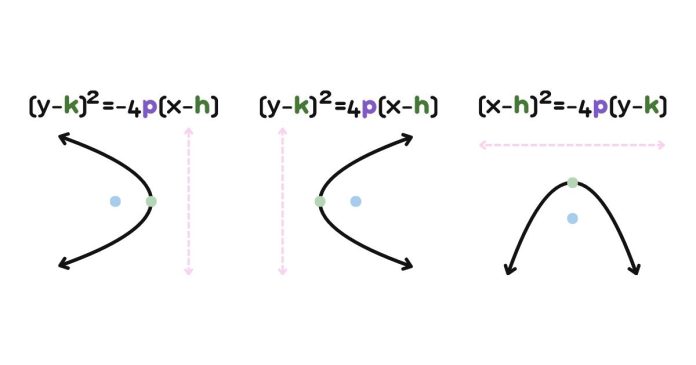When working with quadratic equations, particularly in vertex form, one of the key features you may need to identify is the vertex of the parabola. The vertex is a point on the graph that represents the maximum or minimum value of the quadratic function, depending on whether the parabola opens upwards or downwards. In this blog post, we’ll walk through the steps for finding the vertex in vertex form, explain the significance of the vertex, and help you understand how to interpret it in the context of a quadratic function.
What is Vertex Form?
The vertex form of a quadratic equation is expressed as:
y=a(x−h)2+ky = a(x – h)^2 + k
Where:
- a is the coefficient that determines the width and direction of the parabola (whether it opens upwards or downwards).
- h and k represent the coordinates of the vertex of the parabola. Specifically, the h value is the x-coordinate, and the k value is the y-coordinate.
This form makes it easy to find the vertex directly without needing to complete the square or use other methods.
How to Find the Vertex in Vertex Form
Finding the vertex in the vertex form of a quadratic function is straightforward because the vertex is directly provided by the equation. Here’s a step-by-step breakdown of how to identify the vertex:
Step 1: Identify the Values of h and k
- Look at the quadratic equation written in vertex form: y=a(x−h)2+ky = a(x – h)^2 + k.
- The h value is the number inside the parentheses with x, and you should pay attention to its sign. If the equation is written as (x−h)(x – h), then h is positive. If the equation is written as (x+h)(x + h), then h is negative.
- The k value is simply the constant outside the parentheses.
Example:
Given the equation:
y=2(x−3)2+5y = 2(x – 3)^2 + 5
- Here, h is 3 (because the equation is (x−3)(x – 3), which means the x-coordinate of the vertex is 3).
- k is 5 (since it’s the constant outside the parentheses).
Therefore, the vertex is located at (3, 5).
Step 2: Interpret the Direction of the Parabola
Once you’ve found the vertex, you can also determine whether the parabola opens upwards or downwards by looking at the value of a:
- If a is positive, the parabola opens upwards, and the vertex represents the minimum point.
- If a is negative, the parabola opens downwards, and the vertex represents the maximum point.
In the example above, since a = 2 (a positive number), the parabola opens upwards, and the vertex at (3, 5) is the minimum point.
Why is the Vertex Important?
The vertex is a crucial point in understanding the graph of a quadratic equation. It tells you:
- The highest or lowest point on the graph (depending on whether the parabola opens up or down).
- The axis of symmetry of the parabola, which is the vertical line that passes through the vertex and divides the parabola into two symmetrical halves. The equation for the axis of symmetry is x = h.
- The maximum or minimum value of the quadratic function, which is represented by the y-coordinate of the vertex, k.
Understanding the vertex helps in graphing quadratic equations accurately and analyzing the behavior of the function.
Example Problems
- Problem 1:
y=−3(x+4)2−2y = -3(x + 4)^2 – 2
- Identify the vertex:
- h = -4, k = -2
- The vertex is at (-4, -2).
- Since a = -3 (a negative number), the parabola opens downwards, and (-4, -2) is the maximum point.
- Identify the vertex:
- Problem 2:
y=12(x−1)2+3y = \frac{1}{2}(x – 1)^2 + 3
- Identify the vertex:
- h = 1, k = 3
- The vertex is at (1, 3).
- Since a = \frac{1}{2} (a positive number), the parabola opens upwards, and (1, 3) is the minimum point.
- Identify the vertex:
Finding the vertex in the vertex form of a quadratic equation is simple and straightforward. The vertex is directly represented by the values of h and k in the equation, which gives you the x and y coordinates of the vertex. Understanding the vertex allows you to graph quadratic functions more accurately and interpret their key features, like whether the function has a maximum or minimum value.
Next time you encounter a quadratic equation in vertex form, you’ll be able to quickly identify the vertex and understand the behavior of the parabola. Happy graphing!
Have any questions about vertex form? Drop them in the comments below!


